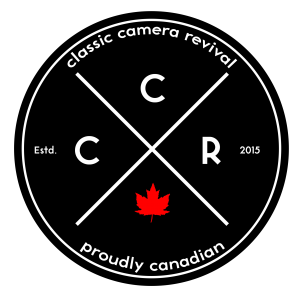When it comes to cameras there are many who are fans of the red dot but we’re not talking about older Kodak cameras, rather those gems from Germany, the Leicas. Today’s episode covers the famous and super expensive M-Series of Rangefinders. Joining Bill and James on today’s episode is Marwan from SilverGrain Classics.
The history of Leica extends well back from the introduction of the M rangefinders. If you have a Leica you’ll know that the company has always had an eye for quality and a certain high-standard. The original Leica cameras designed by Oscar Barnack had their days in the inter-war years and the company was looking towards the future, taking the best of the original Barnack Leicas such as size and film loading, they went and designed a whole new camera giving it the name M. The branding coming from the first letter in the word Meßsucher literally translated as Rangefinder. In addition to a large single view/rangefinder window, they also stopped use of the Leica Thread Mount (LTM or M39) going instead with a bayonet mount, the M-Mount. Which is still in use in pretty much the same form today. Leica showed off their first model to the world in 1954 at that year’s Photokina, the M3. The marketing material stated that the purchase of an M3 is a lifelong investment in photography. The single view/rangefinder window and a leaver based film advances along with the lens mounts were departures from the Barnack cameras, they did maintain a bottom loading method. Engineers also fearing that the torque needed to advance the film in a single stroke of the leaver could tear the film designed these early models to need two shorter strokes of the advance leaver. Today these early M3’s (1954-7) are known as Double-Stroke, from 1958-66 are a single-stroke. Of course, Leica could modify your double-stroke to a single-stroke. What set the M3 apart from all future Leica M-Series camera is that the viewfinder including a .95x magnification factor, by including this the viewfinder lacked the frame lines for a 35mm lens (needing a set of goggles on the front of the camera). Also, the M3 lacked any sort of internal lightmeter, although an external shoe-mounted meter was available. In 1956 Leica released a professional version of the M3 known as the MP and came with a mechanical film advance or Leicavit, the MP saw production for only a year and in that year only approximately between 400 and 500 units were produced. The Leica M2 came out in 1958 as a simpler version of the M3. The M2 used a manual frame counter and the viewfinder only had a .72x magnification factor (something that would be standard for much of the 20th-Century). Leica also produced the M1 which would be a viewfinder camera and designed mainly for scientific and technical purposes only.

In 1967 Leica introduced the replacement to the M3, known as the M4. The M4 used the new standard .72x mag viewfinder allowing it to include frame lines for 35mm lenses standard, it also gave use the classic Leica silhouette with the angled rewind knob. Internally, the removable takeup spool saw replacement with what is now the common quick load catch spool. But the M4 wasn’t enough to catch the attention of many photographers and there were two reasons for that as the 1970s approached. The first is that the M3 and M2 were just too good, no one wanted to dump their ‘lifetime investment’ just for the newest model. The second reason is that new photographers and professionals were drawn to the SLR format. In 1971, Leica would show off their newest M-Series, the M5. The M5 proved to be far too different to photographers, first, it didn’t look like a Leica M-Series, secondly, it had a built-in meter. The meter was an arm-mounted CdS cell that would move out of the way when the shot was taken. But if you mounted certain wide-angle lenses the meter arm would either damage the lens or the lens would damage the meter. And while ergonomically those who use it say it’s not bad and mechanically it’s still built to the same standards as other Leica cameras, it was just too much. Combine the failure of the M5 and the over-engineered and expensive SLRs from Leica at the time the company hit rocky financial shores by the early years of the 1970s.

That all changed, a three-way partnership between Leica, Copal, and Minolta brought about a bit of a revival. A new Leitz-Copal shutter, some excellent SLRs, and the Leica CL (further improved in the Minolta CLE) brought new life to the camera maker. In 1977 Leica took a major step and moved some camera manufacturing away from Germany to Midland, Ontario, Canada. The Midland plant had already been pumping out Leica optics since the end of World War Two and had a far more modern production facility than the one being used in Wetzlar. The M4-2 (1977) and M4-P (1980) are often hailed as the saviours of Leica. The M4-2 would be built to a robust level with internal gears designed to accept a motor drive and the M4-P including frame lines for 28mm and 75mm lenses. Although today many collectors turn up their noses at the “Made in Canada” label or Leitz Canada but trust us, there’s nothing wrong with either the cameras or the lenses. In 1984, Leica again took a stab at including a lightmeter in their rangefinder, the result was the M6 (or M6 Classic as it is known today). This time the M6 retained much of the original Leica styling and used off the shutter curtain metering and in-viewfinder LED displays. Production of the M6 shifted back to Germany in 1986. The M6 came in several different variants, the M6J in 1994 marked the 40th Anniversary of the M-Series. The M6 .85 introduced a .85x magnification viewfinder and in 1998 the M6 TTL introduced proper thru-the-lens metering to the lineup.

In 2002 the first electronic M-Series came out, the M7 which included both TTL metering and aperture priority semi-automatic functionality. The M7 ceased production in 2018, and while Leica did produce several models of Digital M-Series camera they haven’t forgotten their roots. In 2003 they reintroduced the MP name as a return to an all-mechanical camera with a meter, and in 2014 the M-A brought back the meterless M-Series camera. Both the MP and M-A are still in production today but will cost you a fair amount of money to buy new. If you are looking at investing in a Leica there are several things to think about first. There are plenty of Leica M-Series rangefinders out there at various price points but always make sure to budget in the cost of a proper once-over and general tuneup by a trained technician and probably need to budget in the cost of a lens. And if you’re unsure of the history of the camera, make sure to get the serial number and contact Leica. Leica will know far more about the camera than you know, including any modifications done to the camera along with its service history (which is why it is important to take it to a properly trained technician or shop). And honestly, you cannot go wrong with a Leica M-Series. Even the M5 despite being the red-headed stepchild is growing in popularity. If you want a classic model, stick to the M3, M2, or M4(-2), want something with a meter either the M5 or the M6. In fact, many see the M6 as the perfect blend of classic Leica with modern convenience. Of course, if money is no object a modern MP or M-A is the way to go.
Want a subscription to SilverGrain Classics and are a fan of Classic Camera Revival? Visit their shop online and buy a magazine or a subscription? Looking for a good spot to get your gear and material fix check out Burlington Camera (Burlington, ON), Downtown Camera (Toronto, ON), Film Plus (Toronto, ON), Belle Arte Camera (Hamilton, ON), Pond’s FotoSource (Guleph, ON), Foto Art Camera (Owen Sound, ON). Out West there’s The Camera Store (Calgary, AB) and Beau Photo Supply (Vancouver, BC). Additionally you can order online at Argentix (Quebec), buyfilm.ca (Ontario), the Film Photography Project or Freestyle Photographic. Looking for development options, check out these labs that have our support, Boréalis Photo Lab, Old School Photo Lab, The Darkroom, and Film Rescue International.
Also you can connect with us through email: classiccamerarevivial[at]gmail[dot]com or by Facebook, we’re at Classic Camera Revival, Twitter @ccamerarevival, and Instagram (@classiccamerarevival)!

